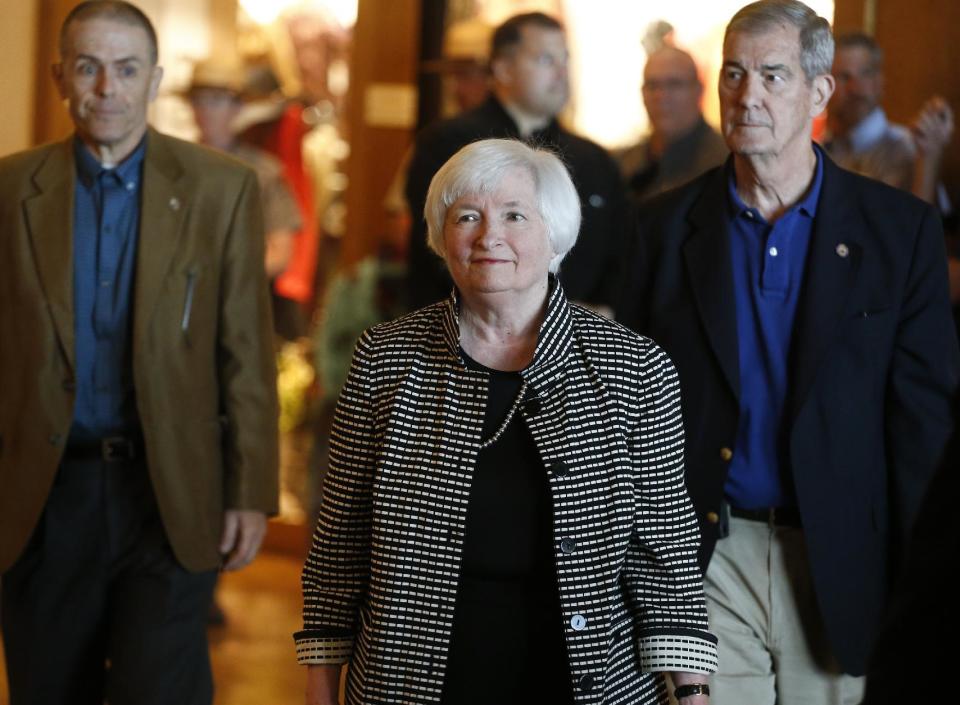The Fed may be preparing for the unthinkable — negative interest rates in America

Negative interest rates are spreading like a virus. Central banks in the Eurozone, Switzerland, Sweden, and Japan all have below-zero policy rates. “NIRP,” as economists call a negative interest rate policy, is a desperation move—but the only move those central banks have.
The Federal Reserve hasn’t followed—yet. When the next recession strikes, I believe Janet Yellen will choose to break the zero lower bound. The rationale was laid out in Jackson Hole. Look behind the headlines and you’ll see the Fed already preparing for NIRP.
In theory, negative rates should encourage consumers and businesses to spend more freely and stimulate growth. It hasn’t worked out that way. NIRP just punishes savers and makes everyone miserable.
The Fed Moves Slowly
Major Fed policy changes unfold very slowly. Remember “The Taper” plan to end quantitative easing? Ben Bernanke first floated the idea in May 2013. It took until October 2014—a full 18 months—to finally end the bond-purchasing program. And then it was another 14 months before the Fed hiked rates with a baby step in December 2015.
The Fed shouldn’t let markets dictate its decisions, but we all know it does. They start hinting months, even years ahead of time in hopes markets will adjust slowly. Sometimes it works.
With NIRP, there’s another complication: The Fed hasn’t done this before. It needs to get ready.
Learning the NIRP Ropes in Jackson Hole
What better way to learn the NIRP ropes than from fellow central bankers who have actually done it? The Fed’s recent Jackson Hole retreat was an opportunity. And sure enough, they had a session on Negative Nominal Interest Rates.
The lead presenter, Marvin Goodfriend of Carnegie Mellon University, is an unabashed NIRP proponent. His paper “makes the case for unencumbering interest rate policy so that negative nominal interest rates can be made freely available and fully effective as a realistic policy option in a future crisis.”
Janet Yellen didn’t bring in Goodfriend for entertainment. She wanted to learn how to implement NIRP. Yellen’s own Jackson Hole speech had a footnote describing a monetary policy rule (to replace the Taylor Rule) that would have sent rates down to -9% in late 2008. It is clearly on her mind.
I believe the Fed wants to have NIRP as a policy option when the next recession begins. Having NIRP in the toolbox does not mean they will actually use it, but it does mean they haven’t ruled it out. The previously unthinkable is now fully thinkable.
Fed Staff Finds Legal Authority
Something else also suggests the Fed is considering NIRP. In congressional testimony last February, Janet Yellen said she had “not fully investigated” the legal issues of a negative rate strategy.
Asked again about NIRP in June, Yellen stated flatly the Fed does have legal authority to use negative rates. She denied plans to do it, but said there was no legal barrier.
So what happened between February and June?
It sure looks like the Fed’s counsel developed some kind of legal justification for NIRP. That doesn’t mean they will do it, of course. It does though strongly suggest Yellen wants to have a NIRP contingency plan ready to pull out if necessary.
Yellen Is Ready for NIRP
I don’t think Yellen will take us down to -9% like the model in her footnote describes. I do think she is mentally prepared to go below zero if she sees no better alternatives that fit within her economic philosophy. I feel very confident she and her colleagues won’t take rates much higher from here. I think we will see 0% again and then lower before we see +2%.
Look, a recession is coming. This recovery, feeble as it has been, is already long in the tooth. I think we have the real potential to enter at least a mild recession no later than the end of 2017 triggered by events in Europe. What will the Fed do then?
They are making those plans right now. If you think 2008–2009 was a wild ride, then fasten your seatbelt. The next crisis will be even wilder.
Subscribe to John Mauldin’s publication, Thoughts from the Frontline.
Follow Mauldin as he uncovers the truth behind, and beyond, the financial headlines in his free publication, Thoughts from the Frontline. The publication explores developments overlooked by mainstream news and analyzes challenges and opportunities on the horizon.
